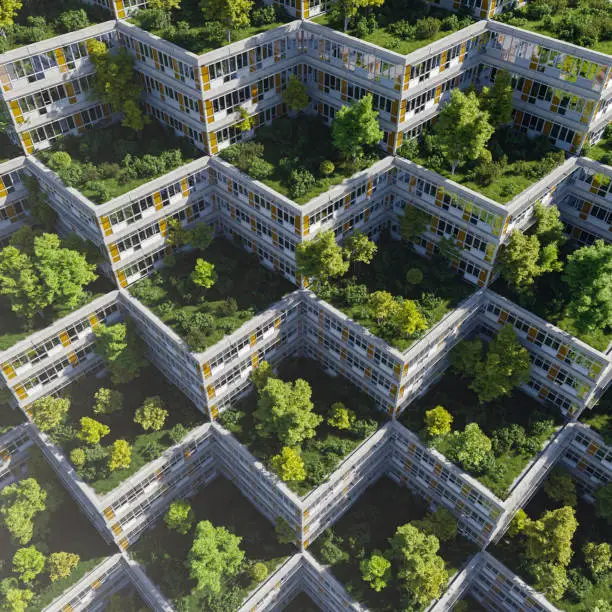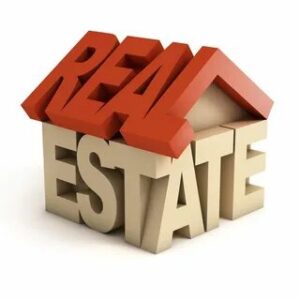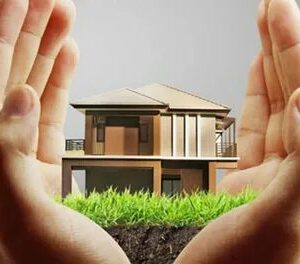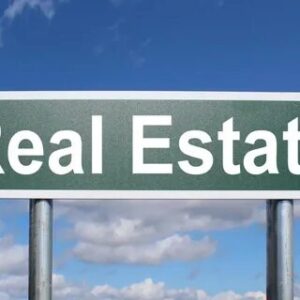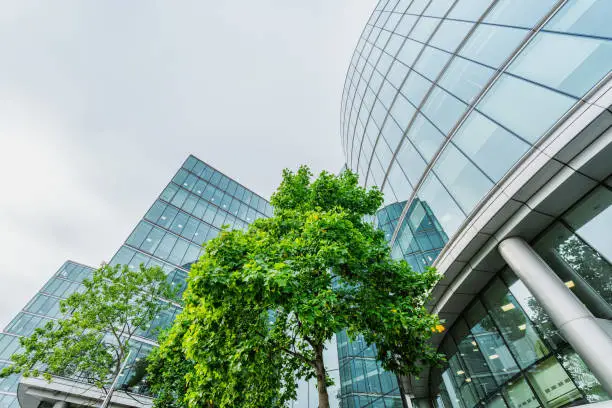
Outline:
Introduction
- Overview of green building trends in 2025
- The importance of sustainable properties in today’s real estate market
- Green Building Trends in 2025
1: Defining Green Buildings and Sustainability in Real Estate
- What makes a building “green”?
- Core principles of sustainability in real estate
- The increasing demand for sustainable properties
2: Why Sustainability Matters in Real Estate
- Environmental impact of traditional buildings
- Long-term cost savings and reduced operational expenses
- How eco-friendly buildings contribute to a sustainable future
3: Key Characteristics of Green Buildings in 2025
- Energy-efficient solutions and renewable energy integration
- Water conservation technologies
- Use of sustainable materials and construction techniques
4: How Technological Innovation is Driving Green Building Trends
- Smart buildings: Integrating automation with sustainability
- The role of AI, IoT, and machine learning in sustainable real estate
- Innovations like 3D printing and modular construction in green buildings
5: Financial Benefits of Sustainable Properties
- Higher rental yields and increased property values
- How green buildings attract eco-conscious tenants
- Tax incentives and rebates for green building certifications
6: Understanding Green Building Certifications and Their Impact on ROI
- Popular certifications: LEED, BREEAM, and others
- How certifications can increase the marketability and value of properties
- Real-life case studies showing ROI from green-certified buildings
7: Energy Efficiency as a Key Driver of ROI
- How energy-efficient systems reduce operating costs
- The effect of energy efficiency on long-term profitability
- Examples of energy-efficient systems boosting ROI
8: Market Demand and Consumer Interest in Sustainable Real Estate
- The rise of eco-conscious buyers and renters
- Generational demand for sustainability in homes and workplaces
- How sustainability has become a significant factor in real estate choices
9: Global Adoption of Green Building Trends
- How different regions are embracing sustainable construction
- Government incentives and regulations supporting green buildings
- The impact of global sustainability initiatives on local markets
10: How Green Buildings Provide Competitive Advantages in Real Estate
- Market differentiation through sustainable design
- Why developers are focusing more on green construction
- Strategies to leverage green buildings for higher profits
11: The Future of Green Buildings: Trends to Watch in 2025 and Beyond
- Predictions for the next generation of green building technologies
- The increasing role of biophilic design and nature integration
- Zero-carbon and net-positive buildings: The future of real estate
12: How Green Building Trends Will Evolve in the Coming Decade
- The growing influence of sustainable urban planning
- The importance of integrating green spaces in urban development
- Predictions for government regulations and green building policies
13: Overcoming Barriers in the Green Building Industry
- High upfront costs and financing challenges
- Lack of standardization in green building practices
- Overcoming resistance to green construction in traditional markets
Conclusion
- Summary of green building benefits and ROI potential
- The long-term value of investing in sustainable real estate
- Final thoughts on the importance of green building trends in 2025
FAQs
- What financial benefits do green buildings offer in 2025?
- How do green building certifications influence property value?
- What role does energy efficiency play in increasing ROI on sustainable properties?
- What are some examples of successful green buildings in the market today?
- What are the challenges developers face when incorporating green building trends?
Green Building Trends in 2025: Are Sustainable Properties the Key to Higher ROI?
READ MORE : reimagining-financial-decision-making
Introduction
As we move toward 2025, the real estate industry is experiencing a seismic shift, with green building trends emerging as a dominant force reshaping how properties are developed, bought, and managed. In a world that’s becoming more eco-conscious and technologically advanced, sustainable properties are no longer a niche market; they are fast becoming a central focus of modern real estate. The question many investors and developers are asking is: Are sustainable properties the key to higher ROI?
The demand for eco-friendly buildings has never been greater, and it’s not just about saving the planet—it’s about saving money, boosting property values, and attracting the growing number of eco-conscious consumers who prioritize sustainability in their living and working spaces. The rise of green buildings is driven by several factors, including increasing environmental awareness, government incentives, and technological advancements that make sustainability more accessible than ever before.
By 2025, the integration of renewable energy, energy-efficient systems, and sustainable materials into buildings will be the standard rather than the exception. As such, developers who embrace green building trends are positioning themselves to benefit not only from long-term cost savings but also from increased property values, higher rental yields, and increased market demand.
This article will explore how green building trends in 2025 are influencing the real estate market and reshaping investment strategies. We will look at the key characteristics of sustainable properties, the financial benefits they offer, and why they are rapidly becoming the go-to choice for investors and tenants alike. By the end, you’ll have a clear understanding of why sustainable properties aren’t just good for the environment—they’re also a smart financial move.
As we look ahead to 2025, green building trends continue to play a pivotal role in shaping the real estate industry. With growing environmental awareness and an increasing demand for energy-efficient properties, sustainable buildings have become not only a necessity but also a lucrative investment opportunity. As a result, green buildings are now considered a key to higher ROI (Return on Investment), both for developers and investors.
In this article, we will explore how green building trends in 2025 are reshaping real estate, offering financial benefits, and attracting tenants and investors. We’ll also dive into the specific advantages of sustainable properties, how they’re impacting market trends, and what future developments in green construction can mean for long-term profitability.
Defining Green Buildings and Sustainability in Real Estate
Green buildings refer to structures designed and built with environmental impact in mind. These properties focus on reducing energy consumption, minimizing waste, and using eco-friendly materials to ensure sustainability. By incorporating innovative technologies and sustainable practices, green buildings provide a significant reduction in a property’s carbon footprint, while also offering financial savings over time.
In 2025, green buildings will be further defined by their ability to integrate cutting-edge technologies that boost energy efficiency, improve indoor air quality, and promote sustainable living. As green building trends continue to evolve, they’ll become a standard in the real estate industry, offering long-term value for investors and tenants alike.
Why Sustainability Matters in Real Estate
Sustainability in real estate goes beyond simply reducing the carbon footprint; it’s about enhancing the value proposition of properties through energy efficiency and resource conservation. For both developers and investors, sustainable buildings offer substantial financial benefits, including reduced operating costs and increased property value.
The Environmental Impact of Traditional Buildings
Traditional buildings are responsible for a large portion of global energy consumption, carbon emissions, and waste. In contrast, green buildings are designed to minimize environmental impact by using renewable energy sources, efficient insulation, and sustainable materials. These eco-friendly features reduce reliance on non-renewable resources, contributing to a healthier planet.
How Sustainability Reduces Operational Costs in the Long Term
Green buildings significantly reduce long-term operational costs by integrating energy-efficient systems, such as solar panels, LED lighting, and high-efficiency HVAC systems. These technologies lower utility bills, reduce waste, and extend the lifespan of the building, leading to higher overall profitability.
Key Characteristics of Green Buildings in 2025
By 2025, the most successful green buildings will feature a combination of energy-efficient technologies, sustainable materials, and cutting-edge design. Here are the key characteristics expected to define green buildings:
Energy-Efficient Solutions and Renewable Energy Integration
Green buildings will continue to integrate renewable energy sources, such as solar power, wind energy, and geothermal heating, to offset their environmental impact. These systems will play a major role in reducing energy consumption and ensuring that buildings can operate independently of traditional power grids.
Water Conservation Technologies
Water conservation will be a key component of green building designs. Sustainable properties will feature rainwater harvesting systems, low-flow fixtures, and water-efficient landscaping to reduce water consumption.
Use of Sustainable Materials and Construction Techniques
The future of green construction will see the widespread use of sustainable building materials, such as recycled steel, bamboo flooring, and low-impact concrete. These materials will help reduce the environmental impact of building projects while offering durability and aesthetic appeal.
How Technological Innovation is Driving Green Building Trends
Technological innovation is at the heart of the green building trend. As more advanced systems become available, developers will be able to build smarter, more energy-efficient structures that are not only better for the environment but also more profitable.
Smart Buildings: Integrating Automation with Sustainability
The integration of smart building technologies will allow property owners and tenants to monitor and optimize energy consumption, lighting, and HVAC systems in real-time. Automation, powered by IoT (Internet of Things), will ensure that energy usage is minimized without sacrificing comfort or convenience.
The Role of AI, IoT, and Machine Learning in Sustainable Real Estate
By 2025, AI and IoT will be fully integrated into the management of green buildings, offering enhanced energy optimization, predictive maintenance, and real-time feedback on building performance. Machine learning algorithms will be able to predict energy needs, adjust systems accordingly, and ensure that properties are operating at peak efficiency.
Innovations Like 3D Printing and Modular Construction in Green Buildings
3D printing and modular construction are revolutionizing the way green buildings are constructed. These technologies allow for more efficient use of materials, reduce waste, and speed up construction times, contributing to more sustainable and cost-effective building practices.
Financial Benefits of Sustainable Properties
Investing in sustainable properties has long-term financial benefits for developers and investors. With lower operational costs, higher demand from eco-conscious tenants, and increased property value, green buildings offer a compelling ROI in today’s real estate market.
Higher Rental Yields and Increased Property Values
Green buildings tend to attract higher rental yields due to the demand for energy-efficient and sustainable living spaces. Additionally, properties with green certifications, such as LEED or BREEAM, generally appreciate faster in value than their traditional counterparts.
How Green Buildings Attract Eco-Conscious Tenants
Millennials and Gen Z, who are more likely to prioritize sustainability, are driving the demand for green buildings. By investing in sustainable properties, developers can tap into a growing market of eco-conscious tenants who are willing to pay a premium for environmentally friendly living spaces.
Tax Incentives and Rebates for Green Building Certifications
Governments worldwide offer various tax incentives, rebates, and subsidies for developers and property owners who build or renovate properties to green standards. These incentives reduce the cost of construction and help improve ROI.
Understanding Green Building Certifications and Their Impact on ROI
Green building certifications, such as LEED (Leadership in Energy and Environmental Design) and BREEAM, are widely recognized in the industry. These certifications not only validate the environmental sustainability of a building but also improve its marketability and value.
How Certifications Can Increase Property Value and Marketability
Certified green buildings tend to have higher marketability due to their sustainability features. These buildings appeal to environmentally conscious buyers and renters, leading to faster sales and higher rental rates. Additionally, certifications can increase the resale value of a property, providing a significant ROI for developers and investors.
Real-Life Case Studies Showing ROI from Green-Certified Buildings
Studies have shown that properties with green certifications achieve a higher ROI than conventional buildings. For instance, LEED-certified buildings have reported rental increases of up to 5-10% compared to non-certified properties.
Energy Efficiency as a Key Driver of ROI
Energy efficiency plays a pivotal role in the profitability of green buildings. By reducing energy consumption, property owners can cut utility costs, which is a significant benefit for both commercial and residential properties. Additionally, energy-efficient buildings are more attractive to tenants looking to reduce their carbon footprint.
How Energy-Efficient Systems Reduce Operating Costs
Energy-efficient systems, such as smart thermostats, LED lighting, and high-efficiency HVAC systems, significantly reduce operating costs for property owners. These systems ensure that energy consumption is minimized, translating into lower utility bills and increased profitability.
The Effect of Energy Efficiency on Long-Term Profitability
While energy-efficient systems may require higher upfront investment, the long-term savings on utility costs and the added property value from sustainability make these systems a worthwhile investment. Studies have shown that energy-efficient buildings can result in up to 30% savings on annual energy costs.
Conclusion
As we approach 2025, it’s clear that green building trends are not just a passing fad but a vital part of the future of real estate. The transition toward sustainable, energy-efficient properties is reshaping the market, bringing with it significant financial rewards. Sustainable buildings are proving that they offer much more than environmental benefits—they are increasingly becoming the key to higher ROI for developers, investors, and property owners.
The financial advantages of green buildings are undeniable: lower operational costs, higher property values, and increased rental yields. With features such as energy-efficient systems, smart technologies, and renewable energy sources, sustainable properties offer long-term savings and provide a competitive edge in the real estate market. Certifications like LEED and BREEAM are recognized globally and can substantially increase a property’s marketability, helping to attract tenants willing to pay more for eco-friendly spaces.
As consumer demand shifts toward sustainable living, particularly among millennials and Gen Z, the real estate market is seeing a growing interest in green properties. These environmentally-conscious generations prioritize sustainability and are looking for properties that reflect their values—properties that offer energy efficiency, reduced environmental impact, and cost savings over time.
Moreover, governments around the world are pushing for more eco-friendly regulations, offering incentives, and creating policies to encourage the growth of green buildings. This supportive regulatory environment ensures that sustainability will continue to be a driving force in real estate development in the coming years.
While challenges exist—such as higher upfront construction costs and the need for industry-wide standardization—green building trends offer unparalleled advantages for investors and developers. Embracing these trends now positions real estate professionals for future success. Sustainable properties are a wise, long-term investment strategy that not only promises a higher ROI but also contributes positively to the planet.
In conclusion, the future of real estate is green, and those who invest in sustainable properties today will reap the rewards in both financial and environmental terms. As the industry moves toward 2025 and beyond, green building trends will continue to shape the market, offering opportunities for growth, innovation, and profitability. Embracing these trends is no longer just an option; it is a smart investment for a sustainable and profitable future.
Green Building Trends in 2025 indicate that sustainable properties are not only beneficial for the environment but also a smart investment choice for real estate developers and investors. With the growing demand for eco-friendly buildings, coupled with the long-term financial advantages such as increased property values, higher rental yields, and operational savings, green buildings will continue to shape the future of real estate.
As technology advances and the demand for sustainability continues to rise, green building trends will play a significant role in reshaping the real estate market. Developers who embrace these trends will position themselves to reap the rewards of higher ROI and contribute to a more sustainable future.
FAQs
- What is the ROI potential of green buildings in 2025?
Green buildings offer a significant ROI potential in 2025 due to their lower operational costs, higher rental yields, and faster property value appreciation. Studies have shown that LEED-certified buildings can command rental premiums of 5-10% over non-certified properties, and they often experience higher occupancy rates. The long-term savings from energy efficiency, coupled with increasing demand for sustainable properties, make green buildings a profitable investment choice. - How do green building certifications like LEED affect property value?
Green building certifications like LEED increase property value by signaling to buyers and tenants that the building meets high sustainability standards. Certified buildings often see faster sales, higher rental yields, and increased marketability compared to conventional buildings. LEED and other certifications help improve a property’s overall appeal, making it more attractive to eco-conscious tenants and buyers, leading to higher demand and stronger financial performance. - What are some examples of energy-efficient systems in green buildings?
Energy-efficient systems in green buildings include smart thermostats, LED lighting, high-efficiency HVAC systems, and solar panels. These systems help reduce energy consumption and lower utility bills. For example, smart thermostats automatically adjust the temperature based on occupancy patterns, and solar panels generate renewable energy that can offset electricity costs, providing long-term savings and improving the sustainability of the property. - How does sustainability in real estate contribute to environmental protection?
Sustainability in real estate contributes to environmental protection by reducing the carbon footprint of buildings. Green buildings utilize energy-efficient systems, renewable energy, water-saving technologies, and sustainable building materials to minimize their impact on the environment. By consuming less energy, conserving water, and using eco-friendly materials, these buildings help lower greenhouse gas emissions, reduce waste, and conserve natural resources. - What challenges do developers face when building green properties
Developers face several challenges when building green properties, including the higher upfront costs associated with sustainable materials and energy-efficient systems. Additionally, there is a lack of standardization in green building practices, which can lead to uncertainty about certification processes and construction requirements. Overcoming these challenges often requires a long-term view and a commitment to sustainability, as the financial returns from reduced operating costs and increased property value come over time.

